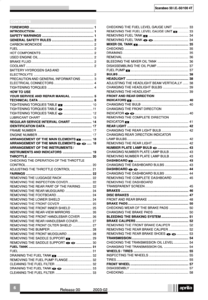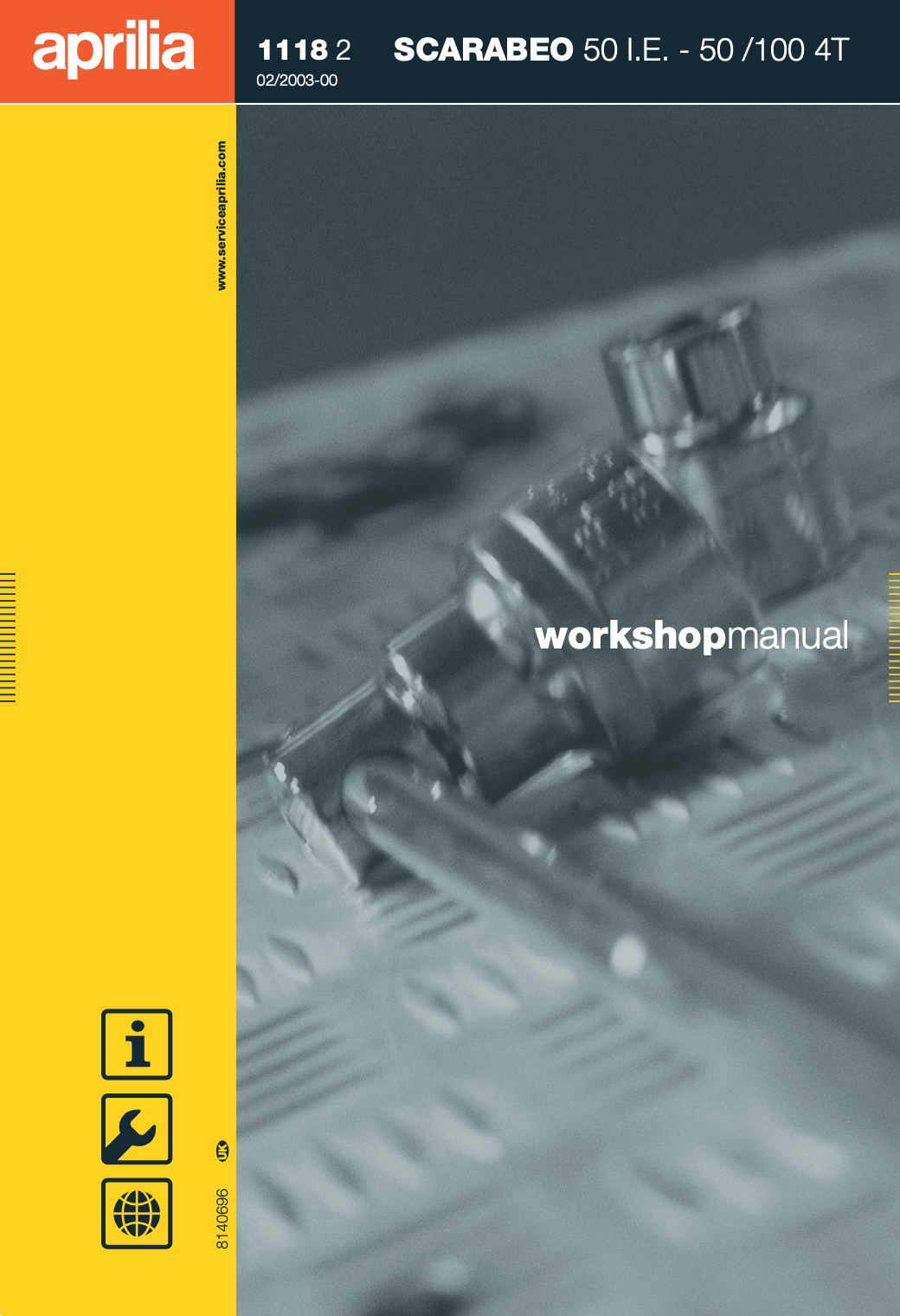Complete PDF version of the Service Manual for the Aprilia Scarabeo. A MUST for every Scarabeo owner.
Download: Immediately after payment!
OEM Original factory workshop manual.
Models covered by this manual: 2003 to 2014
Number of pages: 110 pages
Table of contents:


This PDF repair manual can be downloaded right after the payment process in complete, on the device of your choice.
We do not offer printed manuals, for the following reasons:
- it is more eco-friendly to use a digital version
- your manual never gets dirty or greasy
- you can always choose to print the specific page(s) you need to work on your bike
- you receive your manual immediately after payment
- it is searchable

Aprilia Scarabeo 50/100 4T
Aprilia Scarabeo is a scooter. It was originally shown to the public in 1993 in several displacements.
Scarabeo was founded as a model inside the Aprilia family, but it is now a separate brand within the Piaggio family.
It will be phased out of manufacturing by the end of 2020.
The first Scarabeo vehicle was created in January 1970, Aprilia and scooter 50 cm3 cross culture Egyptian: the Scarabeo becomes the parent of a series of off-road vehicles with various engines, which will be produced until 1974.
The research that gave rise to the high-wheel scooter in 1990 was titled “Study for a City Bike”; the first sketch depicts the center tunnel, the huge section wheel, and a single-sided front fork.
Two projects emerge from the pen of Giuseppe Ricciuti, the Scarabeo’s designer: the first is based on an intermediate version of the original city bike (traditional suspensions, lower section wheels, and a central tunnel); the second, more slender, loses the tunnel and features wheels with a smaller section and larger diameter. The maquette from which the final Scarabeo would be developed was unveiled on May 18, 1992. At this stage, engineering work begins that will keep the technical team busy for nearly a year:
Scarabeo is Aprilia’s first vehicle on which computers are being developed.
In the context of the era’s motorcycles, the Scarabeo attempted to combine the protection of scooter fairings with “high” wheels.
The International Bicycle and Motorcycle official presentation took held in September 1993. Some technical breakthroughs, such as the disc brake, are introduced between 1994 and 1998. The 125 and 150 displacements were demonstrated in Lisbon in 1999.
The engines 50 and 100 share the same body, which is smaller, lighter, and more nimble. A bigger version is planned for displacements of 150 (discontinued), 125, and 200 (renewed in early 2009), while a third version is planned for displacements of 250, 300, 400, and 500.
The later engines use electronic injection and adhere to Euro 3 standards.
The 50 displacement had an initial restyling in 2001 and was outfitted with a two-stroke DiTech engine (first generation direct injection for mopeds), which was also found on another Aprilia scooter, the sporty SR.
The Rotax 125, 150, and 200 engines, which differed only in size until 2001, were replaced by the Piaggio engines that power the Vespa GTs in the 125 and 200 displacements. All engines are four-stroke liquid-cooled (except the 50, which is two-stroke and four-stroke air-cooled), with carburetors up to 200 and electronic injection for the 250, 300, 400 (discontinued), and 500 engines.
The Scarabeo 125/200 GT was introduced in 2002, followed by the Scarabeo 500, a scooter plus grand touring model available with ABS from 2004. Scarabeo celebrates 250,000 registered units in 2005. A new 50 cm3 graphic variant dubbed “Graphic” is also born. In 2006, the “Street” variants with 125 and 200 displacements were introduced, as was the new 500, while in 2007 the 250 ie version of the “big” series (same chassis as the 400/500) and the new generation of the “small” 125/200 series were introduced.
The refreshed 50 and 100 range was introduced in May 2014, and sales since then have hit 750,000 units.
The new 2018 range is introduced on November 7, 2017, and it is limited to the Euro 4 authorized four-stroke 50 variant. There are two versions: classic and street.
The model will be phased out at the end of 2020 owing to the implementation of Euro 5 anti-pollution laws on January 1, 2021.
Source: Wikipedia

